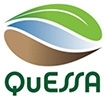 Nature can provide a multitude of hidden benefits to humans such as control of crop pests by their natural enemies, crop pollination and prevention of soil erosion that keeps rivers clean. These are known as ecosystem services and are worth billions of euros every year in each European country.
Nature can provide a multitude of hidden benefits to humans such as control of crop pests by their natural enemies, crop pollination and prevention of soil erosion that keeps rivers clean. These are known as ecosystem services and are worth billions of euros every year in each European country.
The QuESSA (Quantification of Ecological Services for Sustainable Agriculture) project aimed to quantify the key semi-natural habitats (SNH) providing these essential ecosystem services (ES) across economically important cropping systems, farming intensities and four European agro-climatic zones.
The project
The four-year-long QuESSA project, carried out between 2013-2017, included three years of field-based research conducted in 16 case studies in 8 countries (Figure 1). These case studies included wheat, oilseed rape, sunflowers, pumpkins, pears, olives and vines.
 Figure 1: QuESSA case studies across Europe (Sites shown in orange had
Figure 1: QuESSA case studies across Europe (Sites shown in orange had
pest control measurements; sites shown in blue had pollination measurements).
The project aimed to identify key semi-natural habitats (e.g. hedgerows, grass strips and woodland), which provide essential ecosystem services for sustainable agriculture. The project focused on pest control and pollination, but also included services such as erosion mitigation, carbon sequestration and aesthetic value.
What they did
QuESSA came up with standardised classifications for types of semi-natural habitats. Five semi-natural habitat types were identified as follows: in-field fallow (FA), herbaceous areal (HA), woody areal (WA), herbaceous linear (HL) and woody linear (WL).
Project researchers then developed a predictive scoring system for two specific types of ecosystem service: pollinators like honey-bees and wild bees; and flying pest natural enemies such as parasitic wasps and predatory flies. These were used to generate predictive maps of their ecosystem service based upon land cover and their abundance in the five types of semi-natural habitat.
The project’s local-scale maps were used by researchers to explore how the configuration of local landscapes effected ecosystem service provision. The Europe-wide maps gives policymakers an idea of the overall amount of semi-natural habitats on farm landscapes, as well as the value of the services they provide, such pest control (Figure 2).

Figure 2: Natural Pest Control Potential, dimensionless relative score index.
Values are scaled to 0–100. Higher values (green cells) represent cells with
higher potential to support pest control.
Key findings
Biodiversity conservation value was determined for each semi-natural habitat. Species richness, change in species composition through time, and number of red list species were higher in herbaceous semi-natural habitats than in woody ones. In contrast, species community variation was higher in woody semi-natural habitats than in herbaceous ones. Semi-natural habitats were positively associated with levels of biological control, but results were less clear as relationships were weak. However, the presence of woody linear elements (e.g., hedgerows) seem to support the presence of some specific pest controllers like parasitic wasps.
Although QuESSA could not identify the ‘best’ habitat for the provision of pollination or pest-control services, it found that some groups of specific plant species were found to boost the abundance of pollinators:
- Rosacea family (Rubus, Prunus and Rosa genus)
- Asteraceae (Achillea species)
- Leguminosae (Trifolium species)
Pollination deficit was found in 2 out of 6 case studies (sunflowers in Italy 8%; oilseed rape in Switzerland 6%) but the overall deficit was 3%. In sunflower (Italy) and pumpkin (Germany), flowers could expect to receive more than 100 visits by bees during their receptive phase. In contrast, in the oilseed rape crops (Estonia, Switzerland and UK), which is largely wind pollinated, less than 10% of crop flowers could expect even a single bee visit. Therefore, sunflower and pumpkin crops could be more affected by pollinator decline.
Soil carbon was 35-50% higher in semi-natural habitats, but when total carbon was calculated according to the area occupied by each habitat in the landscape sectors more than 80% was stored in fields.
Conclusions
Different semi-natural habitats types were important in different case studies, therefore QuESSA were unable to make Europe wide recommendations because of this. For further information on the case studies, download the project brochure.
Semi-natural habitat types provide resources to beneficial insects and pollinators. Pollinating insects respond to the availability of floral resources throughout the year, whereas pest controllers prefer woody elements. Vegetation also provides food, shelter, and overwintering/oviposition opportunities to beneficial organisms. Therefore, increasing diversity of vegetation on farmland seems like the most promising approach to sustain functional biodiversity and to support ecosystem services.
The use of pesticides and herbicides near flowering vegetation puts at risk the health of beneficial insects, therefore buffer zones may be a solution if spraying cannot be avoided.
A free web-based tool, EFA Calculator, was created by the University of Hertfordshire that allows farmers and policymakers to estimate the contribution that different habitat types make to the delivery of ecosystem services in a particular area.
Further details about the project including the final report, deliverables reports and list of publications are available from the project website.
The QuESSA team are now undertaking further analysis of the data they have harvested throughout the project’s lifetime. Hopefully, in the future, their findings can reach a wider audience who can most benefit from them.
The QuESSA project was funded by the European Commission through the Seventh Framework Programme. Contract Number 311879. Thank you to all the farmers who allowed us to work on their fields.

